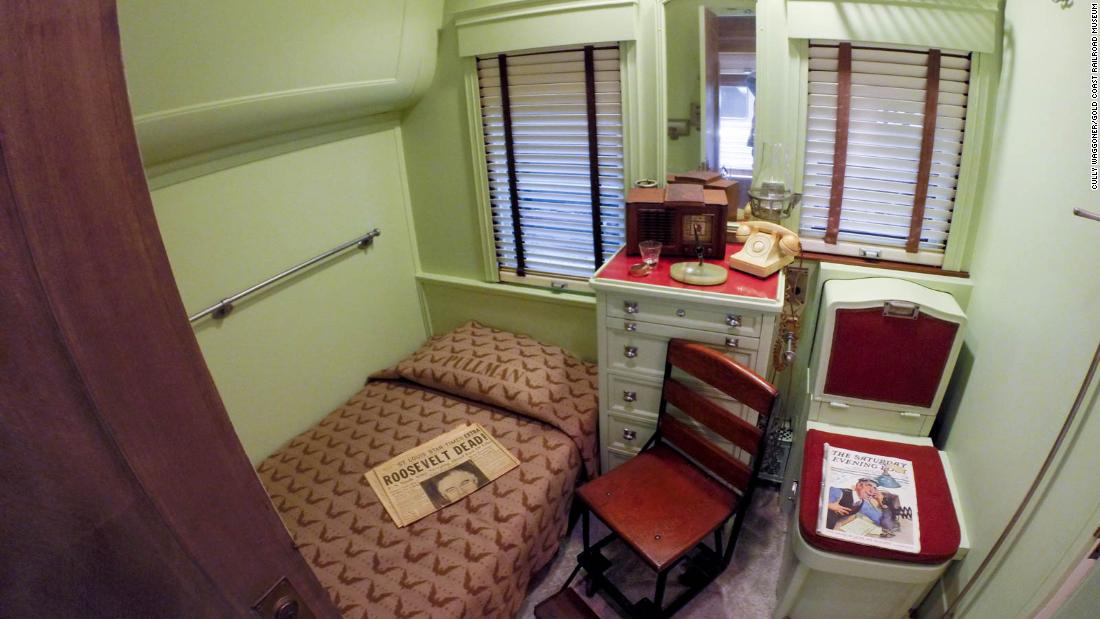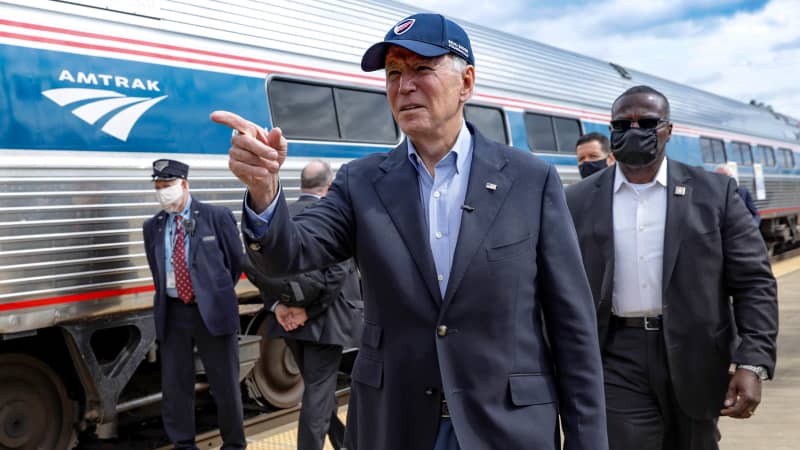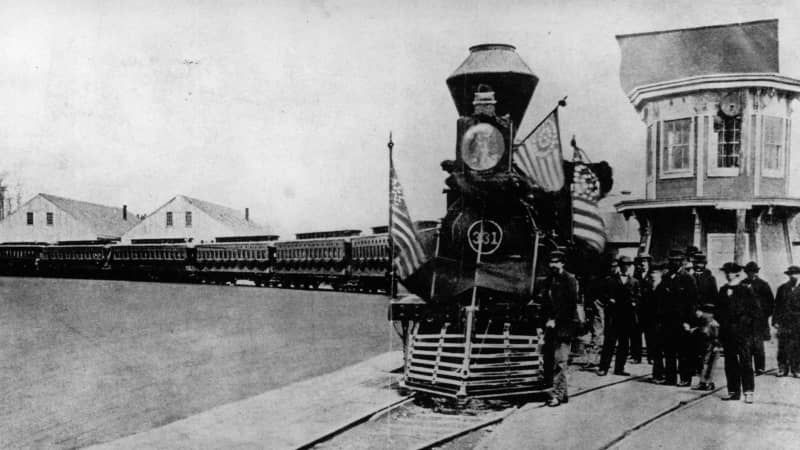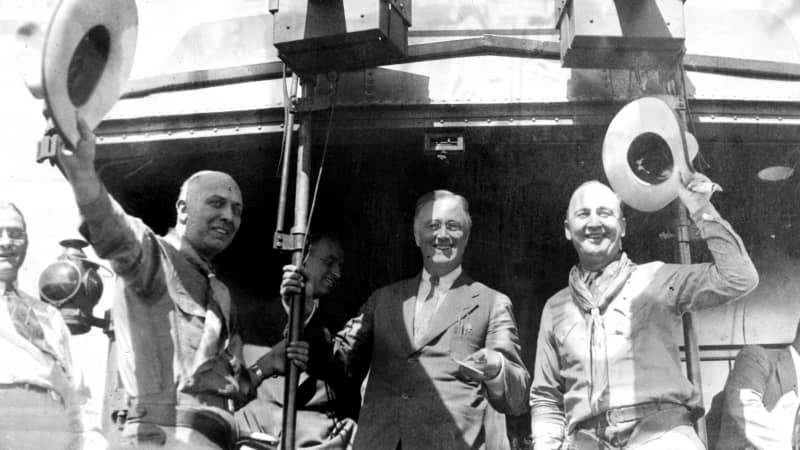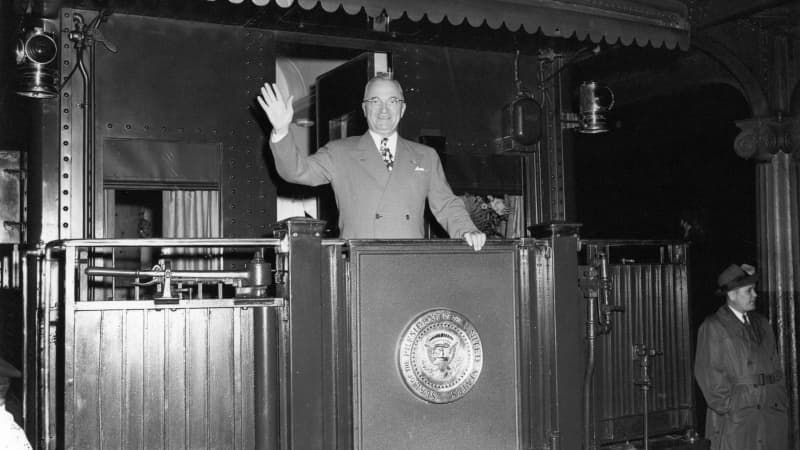(CNN) — “You ride along here at night going home. And you look out. You look in the windows and you see the lights on and think… What is going on at that kitchen table? What are people thinking about? What are their real worries?”
Such thoughts would occupy Senator Joe Biden’s mind on his homeward commute from Washington D.C. to Wilmington, Delaware.
The 46th President of the United State’s relationship with trains reads like a romance. Biden has traveled over two million miles on Amtrak alone, often chewing the fat with passengers — sometimes even buying the coffees.
All of this, though, was prompted by tragedy. Biden was sworn into the Senate in January 1973 at the hospital bedside of his injured son, Beau. The month before, Biden had lost his wife, Neilia, and their 13-month-old daughter, Naomi, in a car crash involving all the Biden children.
Commuting by train meant the industrious family man would be home to kiss his two surviving children goodnight.
In one case, a train may even have won a certain president re-election.
Trains and tragedy
While Andrew Jackson became the first president to ride on a train, William Henry Harrison saw an opportunity to harness steam power for his own ambitions.
Fittingly, his 1836 campaign set off from Biden’s hometown of Wilmington — traveling to Trenton in New Jersey. Harrison was defeated, but returned to win the next election. Unhappily remembered as the first president to die in office, he was also the first to arrive at his inauguration by train.
As he departed the crowded platform at Springfield, Lincoln said: “I now leave… with a task before me greater than that which rested upon Washington.”
As the Civil War reached endgame, a private train car was prepared for Lincoln, named — what else — “The United States.” The president, wary of luxurious trappings, wasn’t sweet on the idea.
In a dark twist of fate, he never got to ride it anyway — at least, not alive.
Lincoln’s only journey aboard The United States came after his assassination. In the spring of 1865, the rail car — crudely stripped of its freshly fixed furnishings, and now fitted with a portrait of the president at the front of the engine — wound its way through some 180 cities between Washington D.C. and Springfield, Illinois in a somber kind of reverse inauguration trip.
James A. Garfield might have been another presidential proponent of trains, had he not been gunned down while about to board one, less than four months into his first term. The 20th President of the United States was shot twice in the back at Washington D.C.’s Baltimore and Potomac Railroad Station on July 2, 1881, dying 79 days later.
The railroad car that won an election
The heyday of the presidential train steamed into town with Franklin D. Roosevelt and his US Car No. 1, or “Ferdinand Magellan.”
The car was an old Pullman, revamped with bulletproof steel, 12-ply laminated glass windows and two escape hatches: one in the roof, fashioned from an old submarine; the other in the bathroom. It was the Air Force One of its day.
It became vital to the president — not for campaigning, but the business of war.
“Roosevelt’s first trip in the Ferdinand Magellan was to Miami, where he boarded the Pan American Airways Boeing 314 Dixie Clipper to travel to the Casablanca Conference,” says Waggoner.
“I have no doubt that he discussed with his generals and advisers the next phase of World War II.”
You can imagine Lincoln flinching at the “creature comforts” Roosevelt afforded himself. On tours of the Ferdinand Magellan, Waggoner reveals to visitors the rudimentary air conditioning, which involves fans circulating cool air, created by blocks of ice.
In the bathroom, meanwhile, is what appears to be a silver soap dish; in fact it’s what Roosevelt used to hold his cigars while he perched on the toilet.
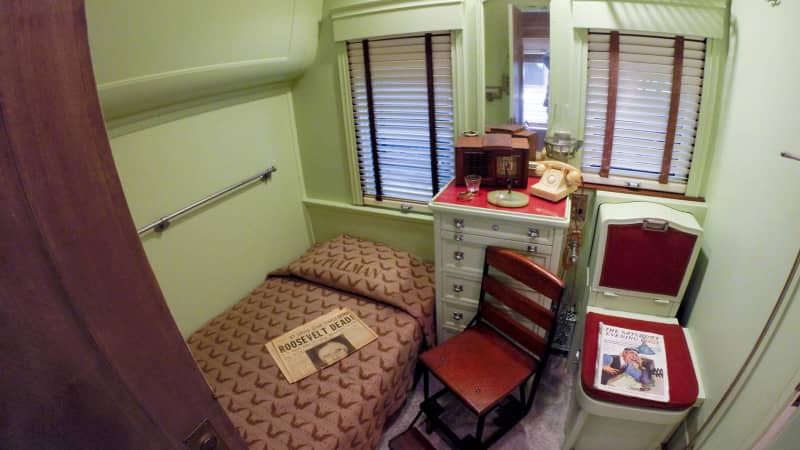
President Roosevelt clocked up serious mileage in the Ferdinand Magellan train car.
Cully Waggoner/Gold Coast Railroad Museum
Still, it was Roosevelt’s successor, Harry Truman, who made the most of US Car No. 1.
During his 1948 re-election campaign against Thomas E. Dewey, Truman journeyed some 28,000 miles across the States, making over 350 whistle stop speeches from the rear platform.
The car became not just Truman’s stage, but his home — a White House on wheels. The president is even said to have washed his socks in one of the on-board sinks.
Truman didn’t favor train travel as much as Roosevelt, but the slog was worth it. “Truman was never a very popular president and he was way behind in the polls,” says Waggoner, “However, he made a connection with the American people during those speeches and that is what pushed him onto victory.”
Dwight Eisenhower was the last president to use the presidential car before it was mothballed, but he did so rarely. He was more interested in roads, signing the Federal Aid Highway Act of 1956, and — in the stroke of a pen — accelerating the rush of big auto and oil, and simultaneously hobbling the rail industry.
The presidential train had juddered to a halt. Or had it?
A ‘second great railway revolution’?
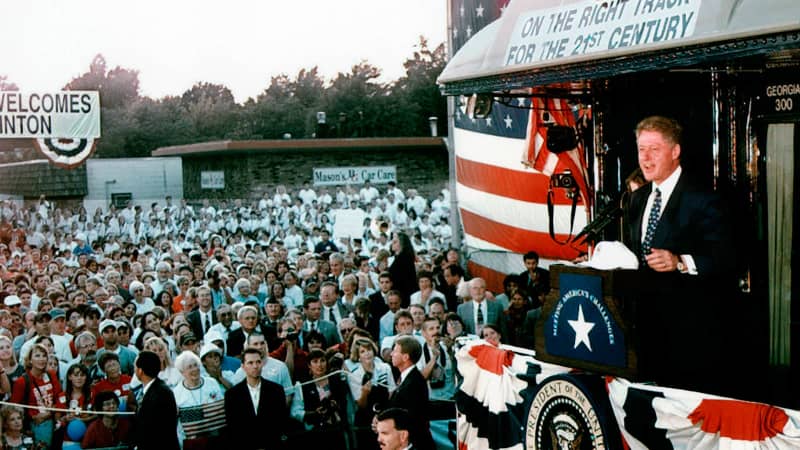
Bill Clinton jumped on the train bandwagon during reelection campaigning in 1996.
PAUL J. RICHARDS/AFP via Getty Images
Though a president’s role often involves gazing into a rose-tinted future, nostalgia always plays well with a crowd. Presidents George H.W. Bush and Bill Clinton both jumped aboard the sentimentality train, with trips on the vintage Georgia 300 railroad car.
They were followed by Barack Obama and Joe Biden, who evoked Lincoln on their way to their 2009 inauguration.
Really though, these were little more than flash-in-the-pan photo ops; could Biden’s presidency reignite POTUS’ personal bond with the rails for real?
“It is far safer and faster to transport a president by air than ground transport, so the likelihood of a president traveling by rail is highly unlikely,” Waggoner says.
At least Biden’s appointment might give the rail industry the boost it’s been crying out for.
In his 2020 election campaign, Biden called out for a “Second Great Railway Revolution,” and now that he’s behind the Resolute Desk, the industry seems cautiously optimistic he’ll be good to his word.
Down the line
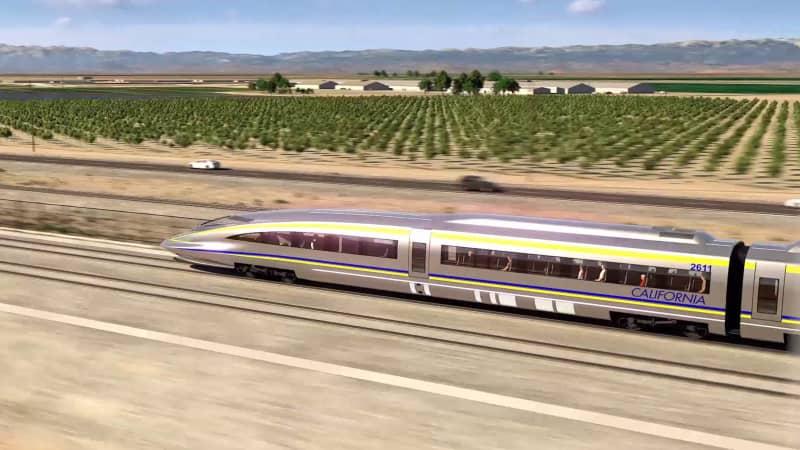
The California High-Speed Rail aims to connect LA and San Francisco in under three hours.
California High-Speed Rail Authority
Melissa Figueroa, chief of strategic communications at California High-Speed Rail Authority, tells CNN Travel: “California and the Biden administration share a common vision in putting people to work with good-paying labor jobs and creating a green transportation system.
“We are hopeful that we can move closer to that reality with this new functional federal partnership.”
Biden’s beloved Amtrak, too, has reason to be hopeful. In the article he wrote for its magazine, Biden described Amtrak as “a powerful and indispensable way to carry us all into a leaner, cleaner, greener 21st century,” going on to muse: “When you consider that it costs an average of $30 million for one linear mile of one lane of highway, you see what a sound investment rail travel is.”
Whether Biden’s presidency can spark a slew of progressive, high-speed rail routes to rival those in Europe and Asia — or even to improve local rail travel, now that a pandemic has egregiously stunted passenger numbers — is another question.
Says Cully Waggoner, “I would love to see Joe Biden do something similar to what Eisenhower did with the Federal Aid Highway Act, and help improve and expand national railroads like they did with the interstate highways.
“However, I don’t see that happening with a national debt of over $21 trillion dollars. It will take private companies to build these new railroads, rather than the government.”
A train may once have single-handedly saved a president’s hide. But it may be naive to think a president alone can now rescue the American train industry.
